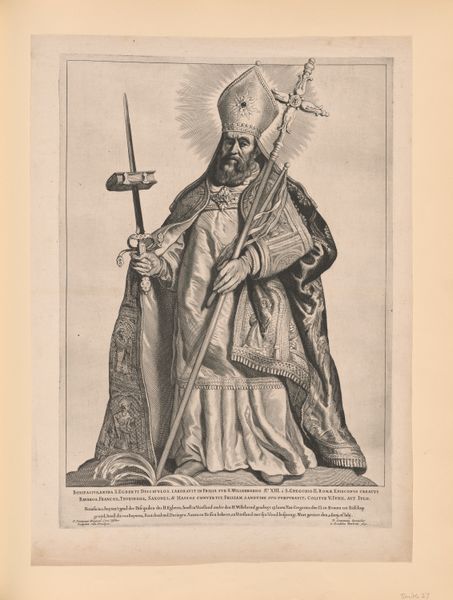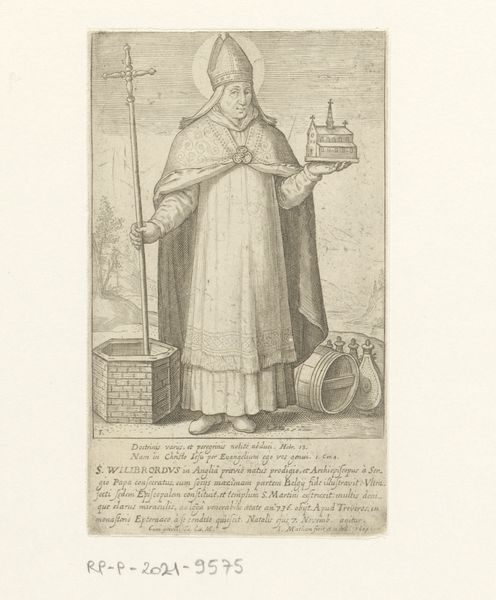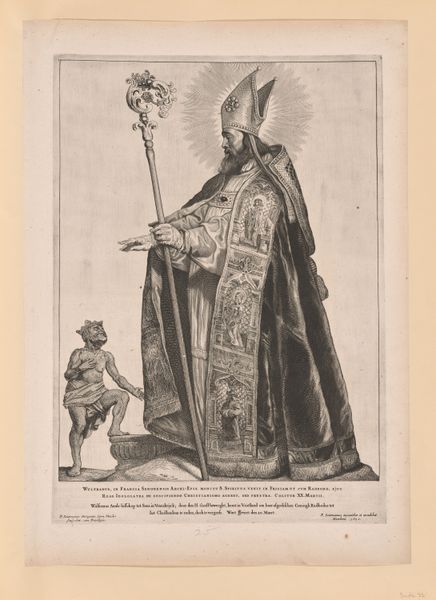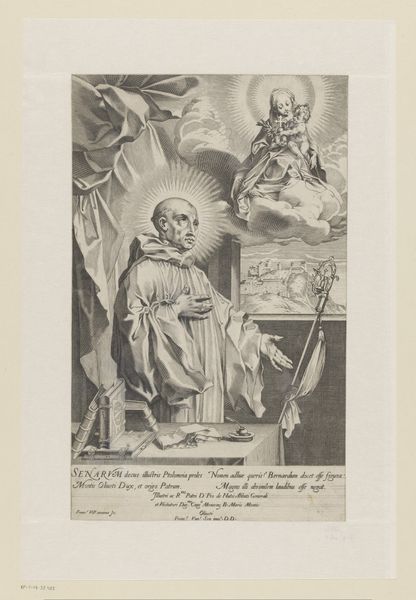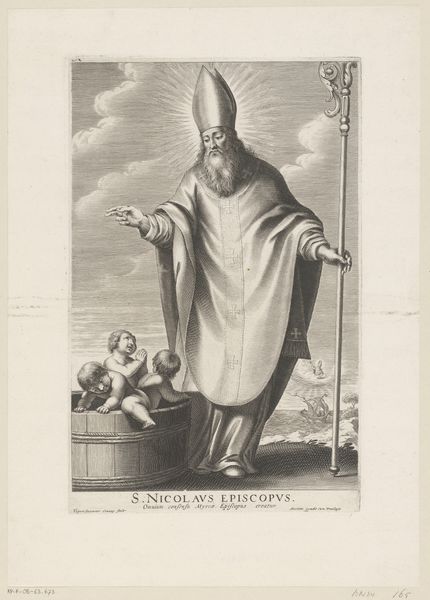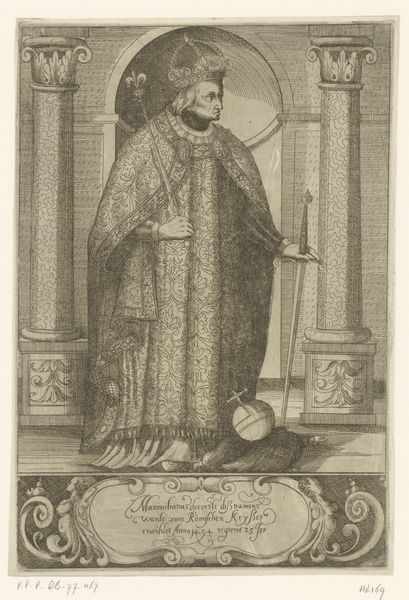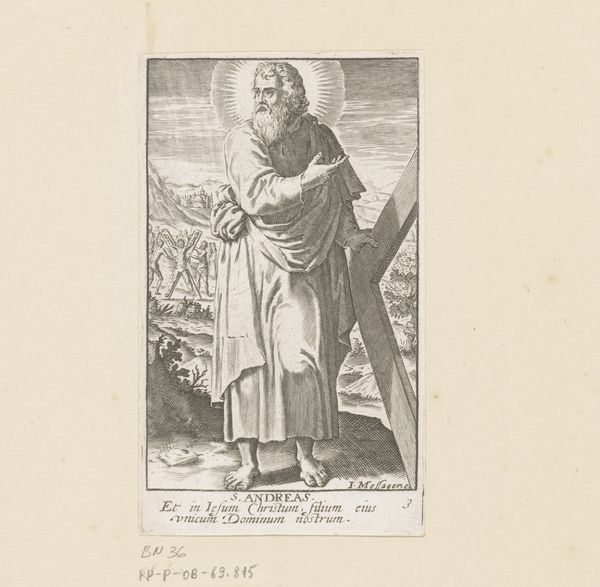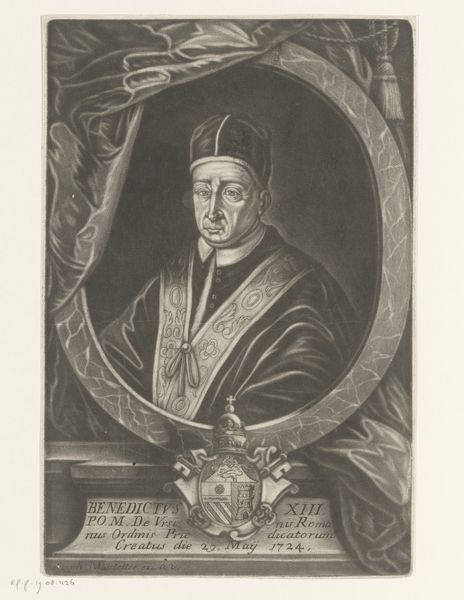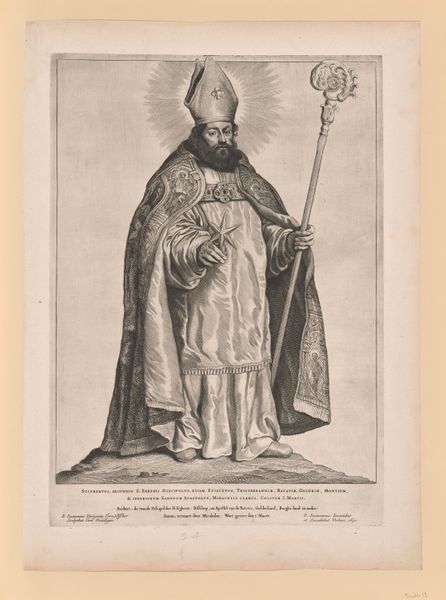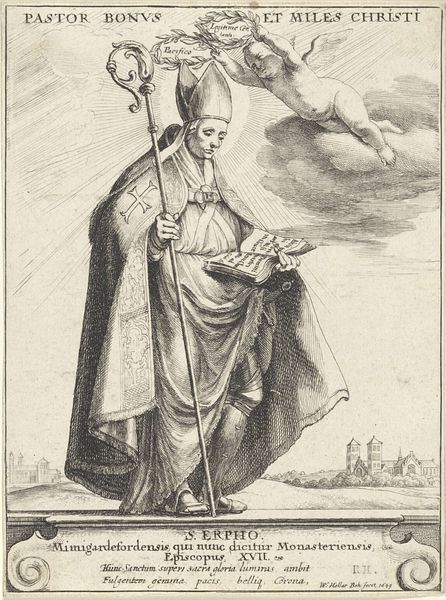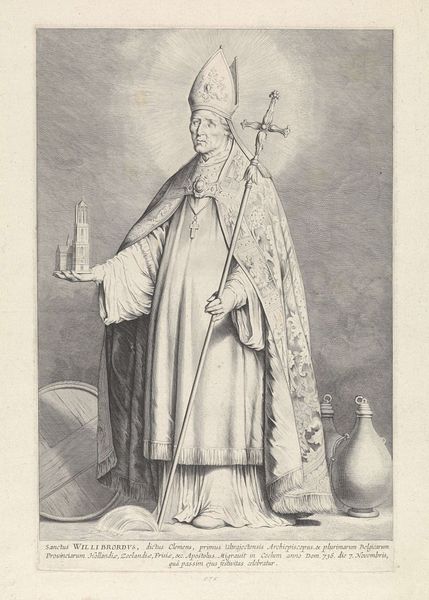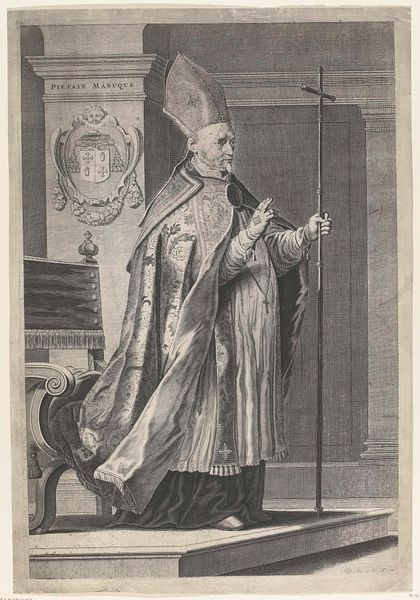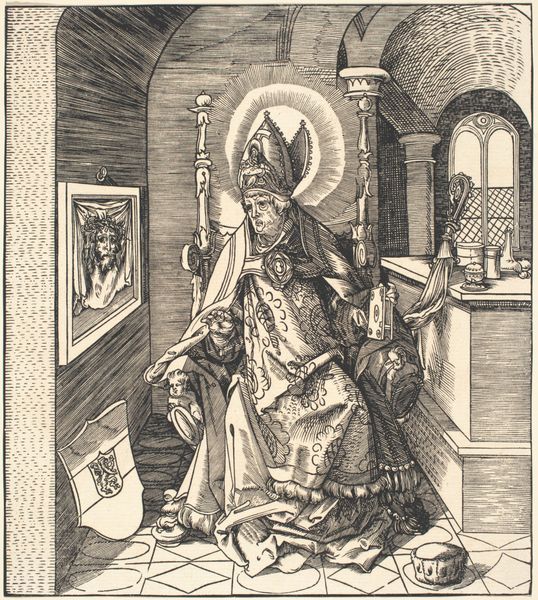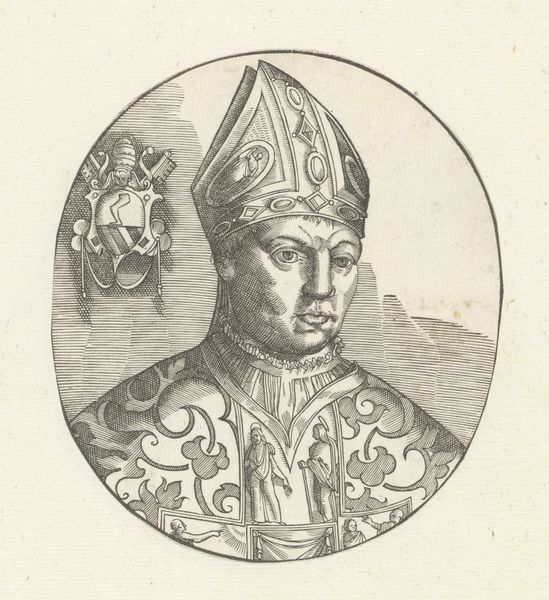
print, engraving
#
portrait
#
baroque
# print
#
old engraving style
#
history-painting
#
engraving
Dimensions: height 96 mm, width 68 mm
Copyright: Rijks Museum: Open Domain
This is a small print, made with metal engraving techniques. The artist is anonymous, and we don't know exactly when it was made. The image is achieved by incising lines into a metal plate, likely copper, with a tool called a burin. This requires immense skill and control, as each line must be carefully planned and executed to create the desired effect of light and shadow. Ink is then applied to the plate, filling the incised lines, and the excess is wiped away. Finally, the plate is pressed onto a sheet of paper, transferring the image. Notice how the varying density and direction of the lines create a sense of depth and texture, particularly in the saint's robes and the background landscape. The fine detail achieved through engraving allows for intricate patterns and subtle gradations of tone. Prints like these were often produced in multiples, making them accessible to a wider audience. They served as devotional aids, souvenirs, and vehicles for disseminating information and ideas. The labor-intensive nature of engraving reflects a time when craftsmanship was highly valued, and the production of such images was a collaborative effort involving skilled artisans and publishers.
Comments
No comments
Be the first to comment and join the conversation on the ultimate creative platform.
